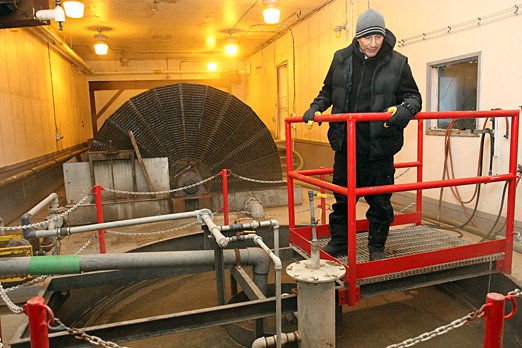The sewage treatment facility at Kasabonika Lake First Nation has reached its limit.
The fly-in community, roughly 800 kilometres north of Thunder Bay, first built the sewage plant in the 1990s. The plant was to meet the demands of the more than 900 people who live in the First Nation community with a capacity to handle 170,000 liters of waste a day.
But the demand according to officials with the First Nation community is more than double as of 2004. In addition, the plant has numerous reported problems from operation challenges to repair needs.
A report done by Northern Waterworks Inc. in July 2011 showed that wastewater flowed out of the door of the plant. The facility was in need of repairs after a raven flew into a breaker. Although this was fixed, the report noted several other problems with the plant.
“The sewer from each individual home are supposed to be drinkable by the time it hits the lake but it’s not doing that,” said Abraham Wabasse, the administrator at the plant.
“There’s too much waste water coming through from the community. The RBC is too small to take care of it. Most of it has to come out through the doors and into the lake. We’re so busy over here to try and minimize the impact of wastewater going into the lake.”
He said the plant is too small and they have to either upgrade the facility or create a new lagoon. The community requested to build a $10 million lagoon but the project has met setbacks. Following the completion of the design in 2007, Indian and Northern Affairs Canada delayed the funding for construction in 2008. A year later, INAC delayed construction again and pushed funding back to 2014.
Wabasse said the lagoon isn’t on the community territory so they had to file more paper work with INAC to have the lagoon there. A letter addressed to the chief and council said they couldn’t support the request.
Wabasse said his community was in a safe zone but thought it was still sad to see the wastewater go through the doors.
Not all the homes are connected to the sewage plant. They advised residents not to hook up their homes in order to offset some of the waste coming in, he said.
There’s no way to know for sure how much of the wastewater is going into the lake because they don’t have a meter to tell them, he said.
He said the Ontario First Nation Technical Services Corporation was expected to come sometime in February to look at the plant.
He added people would have to cut back on water usage in order to help reduce the demand but if that didn’t help then it, they would have to shut down the plant and declare a state of emergency.
Follow Jeff Labine on Twitter @Labine_reporter
Sign in or register
- Messages
- Post a Listing
- Your Listings
- Your Profile
- Your Subscriptions
- Your Likes
- Your Business
- Support Local News
- Payment History
Registered Users
Already have an account?
New Users
Create a free account.
